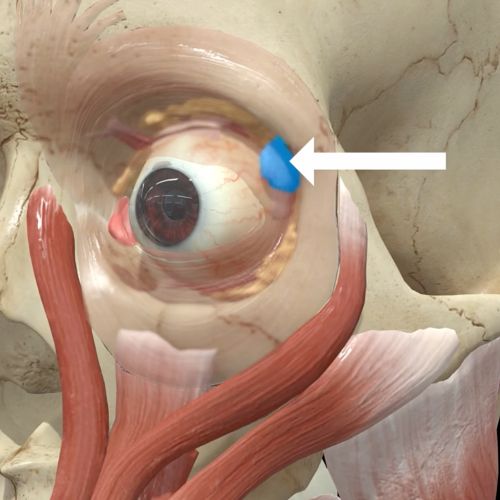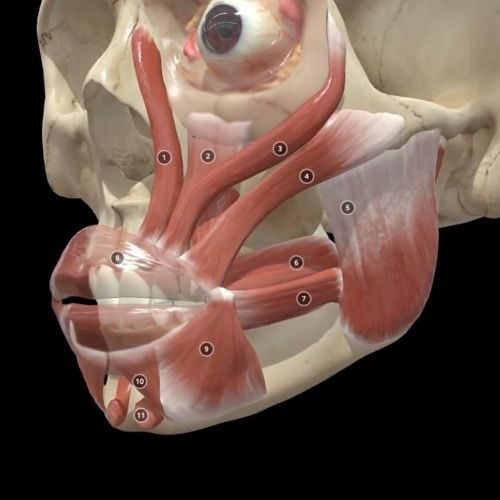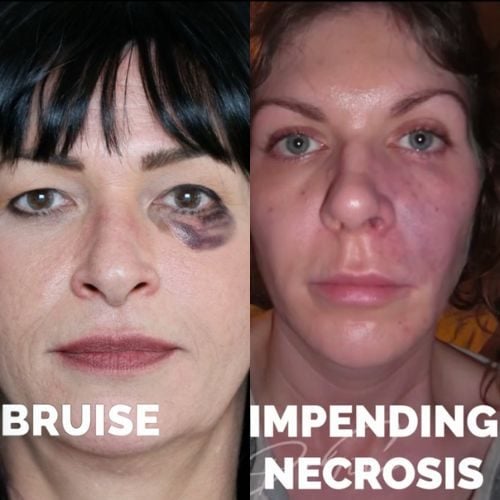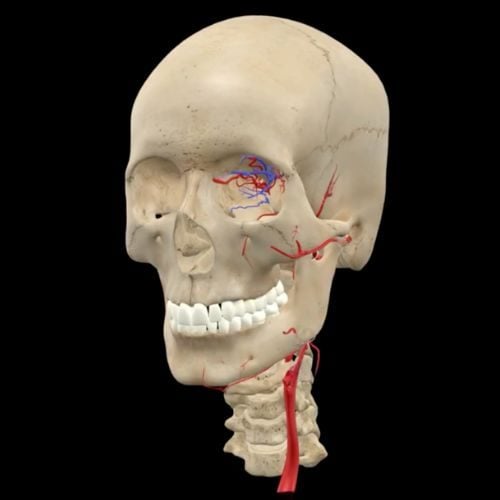- Mail us: support@drtimpearce.com
Muscle anatomy lesson: levator labii alaeque nasi muscle
You may be interested
 Dr Tim Pearce
Dr Tim Pearce

Treating the levator labii alaeque nasi muscle (LLAN) is most associated with botulinum toxin injections to treat a ‘gummy smile’, characterised by too much gum exposed when an individual smiles, but this muscle can also impact the nasolabial fold and nasal function. In fact, there is a lot to learn about it, so let’s dive in.
In this blog, Dr Tim Pearce will unpack the anatomy of the levator labii alaeque nasi muscle, the indications for treating it in aesthetic clinical practice, potential side effects and complications that can be encountered, alongside injection technique, botulinum toxin dosing guidance, and appropriate patient selection.
To be among the first to receive exclusive updates on the launch of Dr Tim’s new movement, featuring an immersive 3D learning experience, comprehensive Botox lessons, and much more, simply sign up here to join the priority waiting list.
The anatomy of the levator labii alaeque nasi muscle
The LLAN muscle is a multifaceted muscle that runs parallel to the nose. It is a prominent member of the nasal muscle group and consists of both a superficial and a deep layer.
 These layers originate from the frontal process of the maxilla and begin near the medial canthus (the inner corner of the eye). From there, they travel along the side of the nose and insert between the levator anguli oris and the orbicularis oris muscle. These muscles are located just above where the LLAN muscle ends. The superficial layer of the muscle proceeds inferiorly to the surface layer of the levator labii superioris muscle, whilst the deeper layer extends even further down, positioning itself deeper than the levator labii superioris muscle.
These layers originate from the frontal process of the maxilla and begin near the medial canthus (the inner corner of the eye). From there, they travel along the side of the nose and insert between the levator anguli oris and the orbicularis oris muscle. These muscles are located just above where the LLAN muscle ends. The superficial layer of the muscle proceeds inferiorly to the surface layer of the levator labii superioris muscle, whilst the deeper layer extends even further down, positioning itself deeper than the levator labii superioris muscle.
The LLAN muscle relies on the facial nerve for innervation, especially its zygomatic and buccal branches, while its blood supply comes primarily from the facial artery and the infraorbital artery.
As a functioning muscle, the LLAN plays a role in several facial expressions. As a double act with the levator labii superioris muscle, it is a lip elevator, elevating the central section of the upper lip to contribute to expressions like snarling and smiling – hence getting its nickname as the ‘Elvis muscle’. It is also involved in nasal functions and influences the medial nasolabial fold.
What are the potential complications and side effects of treating the levator labii alaeque nasi muscle with botulinum toxin?
Treating a gummy smile requires careful consideration and thorough patient consultation to discuss how the treatment might alter the smile. Smiles are deeply connected to personal identity and emotion; alterations may affect authenticity during real-life movement, causing dissatisfaction despite a perfect appearance in photos.
The LLAN muscle is not always the primary muscle responsible for lifting the upper lip, although for most patients it is the dominant force, but other muscles can play significant roles – the zygomaticus minor or the levator anguli oris, for example. Focusing solely on treating the LLAN without considering other muscles may lead to unintended outcomes. Reduction in the activity of the LLAN muscle can result in a noticeable ‘Joker smile’, reminiscent of the character from Batman, which is unevenly lifting the outer parts of the lip whilst the medial part no longer raises.
Botulinum toxin treatment may also highlight subtle lip asymmetries, which patients may not even know they had previously; these are usually easily correctable with touch-up doses targeting the more active muscle side.
Excessive toxin dosing can result in lip ptosis – a condition where the lip droops due to complete relaxation of the LLAN muscle. Similarly, imprecise injections may affect neighbouring lip elevator muscles, causing complications like a drooping lip or impaired oral competence causing struggles with everyday actions like speaking, eating, or drinking. In some cases, patients might even find it difficult to clear their buccal cavity, the space inside their cheeks, with their tongue, meaning they must resort to using their fingers for relief, which can be unpleasant.
Accidental puncturing of the angular artery – which runs just below the skin parallel to the LLAN muscle – is also a risk, requiring immediate attention to apply pressure if bleeding occurs to prevent significant bruising.
Why is patient selection important when treating the levator labii alaeque nasi muscle with botulinum toxin?
Thorough consultation, consideration of muscle interactions, precise dosing, and careful injection techniques are vital to minimise risks and achieve satisfactory results for gummy smile treatments; but choosing the right patients for treatment means understanding all of this and aligning it with the patient’s unique facial features. Managing patient expectations regarding the difference between static photos and natural facial movements is also crucial for realistic outcomes.
Begin with an assessment of a patient’s smile pattern. Do they have a ‘Mona Lisa’ smile or a ‘canine smile’?
- The Mona Lisa smile is the most common and is driven by the zygomaticus muscle and causes the corners of the mouth to lift to their highest point during a smile. Treating a patient with a pre-existing Mona Lisa smile might lead to an overly accentuated appearance that might not be aesthetically desired.
- The canine smile is driven mainly by the levator labii superioris muscle and results in the central upper lip becoming the most elevated part of the smile. Approximately 35% of individuals exhibit this pattern, and they are the prime candidates for this treatment.
- The gummy smile is a pronounced form of the canine smile. Patients with gummy smiles may also have an asymmetrical smile, potentially requiring different doses on each side.
An interesting feature to observe in these individuals is their deeper medial nasolabial folds. Post-treatment, as the upper lip drops slightly and their nasolabials improve, patients can look more balanced and have a more appealing smile by hiding excessive gum display. It is also worth noting that an alternative treatment for gummy smiles involves addressing the nasolabial folds with dermal filler. Read more on treating nasolabial folds – botulinum toxin versus dermal filler.
Using a gentler dose for milder issues allows for a safer treatment, so target patients with moderately overactive muscles as a starting point. The most ideal candidate is someone with an extremely active LLAN muscle but without an excessively noticeable gummy smile. A clear sign of this is when the upper lip retracts and reveals approximately 2mm of gum due to muscle hyperactivity. For those patients, there is a decreased risk of overly lengthening the upper lip post-treatment.
Older patients already tend to have naturally elongated upper lips from age-related changes, so they need careful consideration in case this treatment causes a further lengthening effect on the upper lip.
Patients who have careers that rely on precise oral movement – wind instrument musicians, actors, singers, and public speakers – may find that weakening of their upper lip from the treatment could interfere with their performance.
Not all gummy smiles stem from muscle activity, consider if dental or orthodontic treatments might be a more appropriate solution.
Dosing and injection technique for treating the levator labii alaeque nasi muscle with botulinum toxin
It is wise to start with a conservative dosing strategy for this treatment. Dr Tim recommends 2 units for both men and women when using brands like Botox® or Bocouture™. If you are using Azzalure™, a starting dose of 5 Speywood units is recommended. The required dose will vary based on the level of correction the patient needs and their physiology.
In practice, a total of approximately 5 Botox/Bocouture units, equivalent to 12.5 Speywood units may be needed to achieve the desired results. Male patients might require an increased dosage – 10 Botox/Bocouture units or 25 Azzalure Speywood units.
To precisely target the LLAN muscle, start by positioning the index finger of your non-injecting hand firmly where the nasal bone intersects the maxilla. This strategic placement will cause half of your finger to sit within the pyriform aperture and the other half to align with the groove between the nasal bone and maxilla. Then, ask your patient to smile as hard as they can – this action will contract the muscle and you will be able to feel its edge right beside the groove under your finger. The ideal injection spot is in the upper portion of the piriform fossa, which is near the pyriform aperture, often referred to as the apical triangle of the upper lip. This should be roughly 1cm above the lateral part of the nostril.
Make sure you know your muscle anatomy to avoid side effects from Botox in the lower face.
Dr Tim is always keen to hear about the experiences of his followers. So, if you have any questions, case studies, or discussion points for him, you can find Dr Tim Pearce on Instagram.
BOTOX (Botulinum Toxin) eLearning Courses
If you want to increase your confidence in botulinum toxin injections, or learn how to avoid and handle complications, Dr Tim Pearce offers two comprehensive courses that are highly rated by our delegates:
Both give CPD and certificates on completion.
In addition, browse our FREE downloadable resources on complications.
3D anatomy learning experience movement

In the next few weeks, Dr Tim Pearce is going to be launching something amazing that involves an incredible 3D learning experience for injectors, a community of clinicians on the same mission as you to help you achieve your goals, and exclusive online access to him and his team. Be the first to join the movement by joining the priority waiting list.
Botox® is a registered trademark of Allergan Aesthetics plc.
Dr Tim Pearce eLearning
Dr Tim Pearce MBChB BSc (Hons) MRCGP founded his eLearning concept in 2016 in order to provide readily accessible BOTOX® and dermal filler online courses for fellow Medical Aesthetics practitioners. His objective was to raise standards within the industry – a principle which remains just as relevant today.
Our exclusive video-led courses are designed to build confidence, knowledge and technique at every stage, working from foundation level to advanced treatments and management of complications.
Thousands of delegates have benefited from the courses and we’re highly rated on Trustpilot. For more information or to discuss which course is right for you, please get in touch with our friendly team.
Related Articles
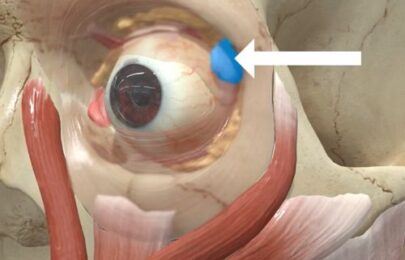 Bestseller
Bestseller
Avoiding Botox Eye Complications From Dry Eye to the ‘Psycho Look’
September 30, 2025
Avoiding Botox Eye Complications From Dry Eye to the ‘Psycho Look’
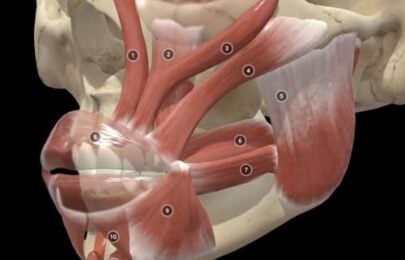 Bestseller
Bestseller
How to Fix a Crooked Smile with Botox
September 25, 2025
How to Fix a Crooked Smile with Botox
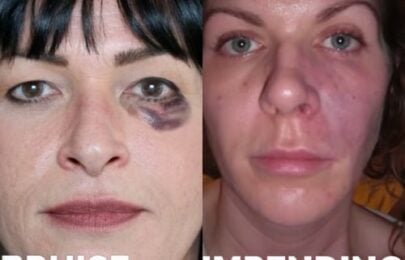 Bestseller
Bestseller
Multiple Causes of Vascular Occlusion and Necrosis
September 23, 2025

